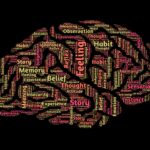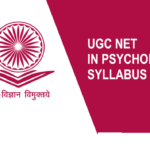Introduction:
Intelligence and aptitude are two fundamental aspects that shape our cognitive abilities and determine our potential for various tasks. While intelligence refers to our overall cognitive capacity, aptitude refers to specific abilities or talents in a particular domain. In this blog post, we will delve into the concept of intelligence and aptitude, explore various theories of intelligence, examine emotional and social intelligence, analyze the measurement of intelligence and aptitudes, discuss the concept of IQ and deviation IQ, explore the measurement of multiple intelligence, and distinguish between fluid intelligence and crystallized intelligence.
Understanding Intelligence:
Intelligence can be broadly defined as the ability to learn, reason, problem-solve, and adapt to new situations. It encompasses a range of cognitive processes, including memory, attention, perception, language, and decision-making. Over the years, researchers have proposed different theories to explain the nature of intelligence.
1. Spearman’s Two-Factor Theory:
Charles Spearman proposed a two-factor theory of intelligence in the early 20th century. According to Spearman, there is a general intelligence factor, often referred to as the g-factor, which underlies all cognitive abilities. Additionally, he suggested the existence of specific intelligence factors, known as s-factors, which are unique to specific domains.
2. Thurstone’s Multiple-Factor Theory:
Louis Thurstone proposed a multiple-factor theory of intelligence, which challenged Spearman’s idea of a single g-factor. Thurstone argued that intelligence is composed of several primary mental abilities, including verbal comprehension, numerical ability, spatial visualization, memory, and reasoning. Each of these abilities is relatively independent and contributes to overall intelligence.
3. Guilford’s Structure-of-Intellect Theory:
J.P. Guilford’s structure-of-intellect theory expanded on Thurstone’s ideas by suggesting that intelligence can be analyzed across three dimensions: operations (types of cognitive processes), contents (types of information), and products (outcomes of thinking). This theory emphasizes the importance of divergent thinking, convergent thinking, and the ability to generate novel ideas.
4. Vernon’s Hierarchical Theory:
J.L. Vernon proposed a hierarchical theory of intelligence, which includes both general and specific abilities. He suggested that general intelligence can be divided into two levels: fluid intelligence and crystallized intelligence. Fluid intelligence involves reasoning, problem-solving, and adaptability, while crystallized intelligence involves acquired knowledge and skills.
5. Sternberg’s Triarchic Theory:
Robert Sternberg’s triarchic theory of intelligence emphasizes three aspects of intelligence: analytical intelligence (analyzing and evaluating information), creative intelligence (generating novel ideas and solving problems), and practical intelligence (applying knowledge to real-world situations). Sternberg emphasizes the importance of adapting intelligence to different contexts.
Emotional Intelligence and Social Intelligence:
Beyond traditional cognitive abilities, two other forms of intelligence have gained significant attention:
1. Emotional Intelligence (EI):
Emotional intelligence refers to the ability to perceive, understand, manage, and use emotions effectively. It involves recognizing and regulating one’s own emotions and being empathetic towards others. EI plays a crucial role in interpersonal relationships, communication, and self-awareness.
2. Social Intelligence:
Social intelligence encompasses the ability to understand and navigate social situations successfully. It involves perceiving social cues, empathizing with others, and effectively managing relationships. Social intelligence is essential for interpersonal communication, teamwork, and leadership.
Measurement of Intelligence and Aptitudes:
Psychologists have developed various tests and assessments to measure intelligence and specific aptitudes. One commonly used measure is the Intelligence Quotient (IQ), which is derived from standardized tests. IQ tests assess cognitive abilities in areas such as verbal reasoning, mathematical problem-solving, and spatial awareness. These tests provide a numerical score that represents an individual’s intellectual potential in relation to their peers.
Concept of IQ and Deviation IQ:
IQ is calculated by comparing an individual’s test performance to the performance of a representative sample of the population. The average IQ is typically set at 100, and scores above or below indicate relative deviations from the average. Deviation IQ allows for comparisons across age groups, enabling us to understand how an individual’s intelligence compares to others of the same age.
Measurement of Multiple Intelligence:
Howard Gardner proposed the theory of multiple intelligences, which suggests that intelligence is not limited to a single factor. Gardner identified several independent intelligences, including linguistic, logical-mathematical, musical, spatial, bodily-kinesthetic, interpersonal, intrapersonal, and naturalistic intelligence. Each person possesses a unique combination and level of these intelligences.
Fluid Intelligence and Crystallized Intelligence:
As per J.L. Vernon’s hierarchical theory, intelligence can be categorized into fluid and crystallized intelligence. Fluid intelligence involves the ability to think abstractly, reason logically, and solve novel problems. It tends to decline with age. Crystallized intelligence, on the other hand, encompasses knowledge and skills acquired through education and experience. It tends to increase with age.
Conclusion:
Intelligence and aptitude are multifaceted constructs that shape our cognitive abilities and determine our potential. Through the exploration of various theories and concepts, we have gained a deeper understanding of intelligence as a complex and diverse phenomenon. The measurement of intelligence has evolved, encompassing not only traditional IQ assessments but also emotional intelligence, social intelligence, and multiple intelligences. Understanding our cognitive strengths and weaknesses can empower us to leverage our abilities effectively and adapt to the challenges of the world around us.







